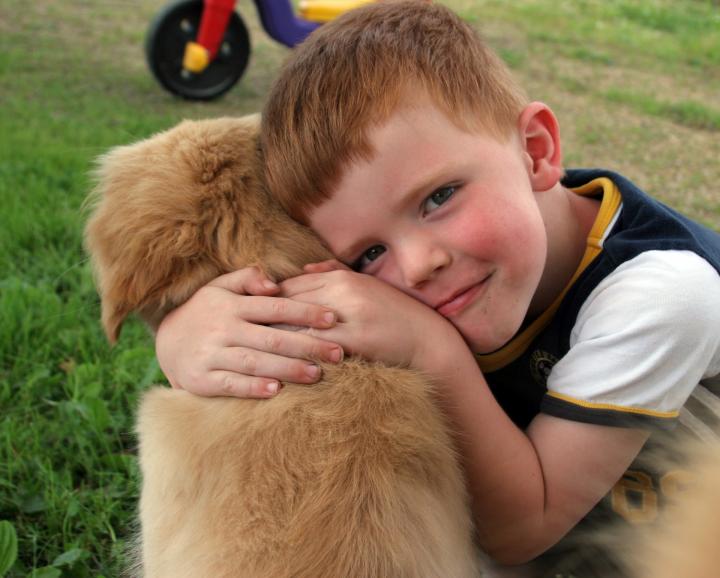A Sweet New Pet! How to Find the Right Puppy for You
Tips on choosing the right dog breed
For daily wit & wisdom, sign up for the Almanac newsletter.
Body
Did you know that there are over 300 breeds of dogs? To find out whether a certain dog is right for you (and you are right for the dog), understand the natural traits of different breeds. Here are some questions you might want to ask when you’re looking for a puppy—whether you are at a shelter or with a breeder.
Understanding the breed(s) of dogs is important so that the breed’s personality aligns with your lifestyle, environment, and family members. Here are some questions to consider and ask the breeder, shelter, or rescue center about.
Is the dog loud?
- It’s natural for dogs to bark. They do so to protect their territory and when they are feeling playful.
- Some dogs, such as terriers, beagles, and certain hounds, bark more often than other breeds. They’re exuberant and loyal, but you’ll always know when they’re around.
- This makes “chatty dogs” better dogs for homeowners than apartment dwellers.
How easy is the dog to train?
- Consider how many hours you have to put into training your dog.
- Working and herding dogs tend to be highly responsive because their job is to work with people. They may have been bred to take orders, make decisions, and solve problems. It’s no accident that many Hollywood dogs are Border collies or Australian shepherds.
- Dogs that are easy to train tend to be the types of dogs who are eager to please. For example, golden retrievers are the ultimate people dog. But also remember that these dogs also love to be with their owners and can suffer separation anxiety, so please do not get a people pleaser if at least one family member is not going to spend time at home (or sign up for doggy daycare).
- Difficult doesn’t mean “dumb;” these less trainable dogs are simply bred for hunting or other jobs. Basset hounds, bloodhounds, dachshunds, Siberian huskies, and dalmatians are among the breeds that are challenging to train.
- Start training your puppy as soon as they come home, even with simply 5-minute sessions to learn their name.
- Remember: A puppy has to reach a certain maturity before it can be safely separated from its mother. A puppy should be at least ten weeks old when separated, or else it will have a greater chance of being small, antisocial, and prone to illness.

How active are you?
- Understand how much exercise your dog will need to keep him or her happy (and to keep you sane!). Do not buy an active dog breed if you do not have an active lifestyle.
- High-energy breeds, such as Border Collies and Belgian Malinois, require a tremendous amount of activity. In general, avoid working breeds like huskies and sheepdogs. If a dog was bred to work, it doesn’t want to nap and snuggle all day.
- Low-energy breeds, like the Bulldog, Basset Hound, or Irish Wolfhounds, are relatively calm dogs that need less activity.
- Some breeds are simply very adaptable, such as the Cavalier King Charles Spaniel, which can be a lap dog or go on a walk!
- Note: Even small, low-energy dogs need to be walked, or they will be bored or misbehave.
- Also, consider the size of your indoor space. Do you live in a small apartment or a large house? Do you have lots of outdoor space for a dog to run? Often a larger dog needs more space, but this is not always the case as some large dogs are low-energy. (Do your research.)
- Finally, if you’re older or just don’t have the time to be active, consider a senior dog from a shelter! They’re more relaxed and just want to be loved!

Do you have children?
- Some breeds aren’t ideal for children (or older folks). Perhaps they’re bred for a specific job (hunting), or they’re fiercely independent, or they rough play too much.
- For example, the Weimaraner and Akita are bred to hunt large prey and can play rough.
- Small dogs such as the Pekingese and Chihuahua tend to protect their personal space and may bark or bite children who don’t know how to read their cues yet.
- Dogs that are eager to please are generally good with families, such as St. Bernards and Golden Retrievers. But remember that these gentle, emotionally intelligent dogs also need families who can spend a lot of time with them as they want to be with their people.
- Also, consider if anyone in your family suffers from allergies; if so, you’ll want to look for dogs that shed less hair and dander, like a Schnauzer, Bichon Frise, or Poodle.

What’s likely to ail this dog?
- Be sure to understand the breed’s common health issues. For example, some breeds are very susceptible to respiratory disorders or hip dysplasia. Others have poor eyesight or are prone to certain diseases. Any of these problems will shorten the life of your pet and perhaps cost you thousands of dollars in veterinary bills.
- Also, ensure you have the budget to properly care for a dog; it’s a big responsibility. According to the ASPCA, the average cost to care for a dog per year is $700 to $900. Health issues or special needs will drive the costs higher.
A final word: Visit shelters!
Both purebreds and “mutts” end up in shelters, often because their prior owners did NOT do their research to fit the right breed for their lifestyle. High-quality shelters will help you fit the dog to your personality because they want the dog to find the right home. Keep in mind that it may be more challenging to find a shelter dog for a very young child because they set limitations on breeds to ensure your child’s safety.
We hope this gives you some ideas of what to think about! Go to the library or store and find a book on dog breeds to learn more. Or, try this online Breed Selector.
How old is a dog in human years? Find out with our Dog Age Calculator!
About The Author
Heidi Stonehill
Heidi Stonehill is the executive editor for The Old Farmer’s Almanac, where she focuses much of her time on managing content development for the Almanac’s line of calendars.
Read More from Heidi Stonehill












